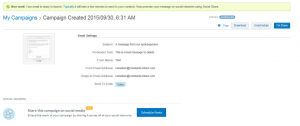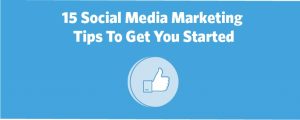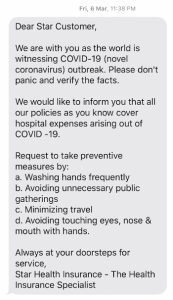If you (as a blogger) think that ‘Facebook Instant Articles’ could be the straw that finally breaks your blogging business’ back, think again.
For every 100 sites that think Instant Articles is not worth 2 cents, there are 1000+ out there that have gone ‘all-in.’ Thanks to the dual benefit the platform offers: One, it loads content ten times faster than mobile web articles. Two, it provides an incredible audience reach; 1.71 billion monthly active Facebook users.
Not surprisingly, anybody who’s in the publication industry has been milking Facebook Instant Articles for all its worth. Be it Washington Post, The New York Times, BBC News or CNBC news, almost all publications and bloggers big and small have climbed on the Instant Articles bandwagon.
The naysayers, of course, have valid reasons for not embracing Instant Articles, one being that Facebook is trying to build a content monopoly by taking over content distribution, by offering no backlinks to the company blog – the actual content source. This could hurt SEO, traffic, and conversions for any site.
It’s been agreed that Facebook Instant Articles won’t drive traffic to your blog, but instead back to its own app. However, there are 10 rock-solid reasons that could make Instant Articles a favorite feature among bloggers – WordPress or not.
Before we delve into the Instant Articles pluses, here’s a brief take on what Facebook Instant Articles is all about for those who do not have the faintest idea as to what it is in the first place.
Facebook Instant Articles in a nutshell
As the name implies, ‘Facebook Instant Articles,’ make articles appear instantly on a Facebook app. In short, the article will get downloaded ten times faster in a mobile app than mobile web articles.
However, the article won’t be linked to your company website or blog.Instead, the complete article will open up within the Facebook app when the Facebook user clicks on the Instant Articles Link.

Furthermore, it will have the same look and feel of your website and be optimized for mobile, but it will be a miniature version of your site.
And as per Facebook’s update, articles must be first published on your website and then converted into an Instant Article.
Now I know what you’re thinking: how will the user know if your website has a Facebook Instant Article feature?
The little lightning bolt icon in the top right corner of the image on a Facebook page will help readers identify an Instant Article link, which will open in the Facebook app and not on The Washington Post’s website.
Why Facebook Instant Articles are worth your immediate attention
A whopping 90% of Facebook’s monthly active user’s access Facebook platform on mobile and Instant Articles is fully optimized for mobile. And because the platform has been successfully tried and tested with selected partners since May 2015 and the results were pretty encouraging:
– Instant articles received 20% more clicks than mobile web articles
– 70% of the readers were more likely to read the article
– Receives 30% more shares than mobile web articles.
Other rock-solid reasons why bloggers should go for Instant Articles:
#1. Faster Loading Speed
Facebook Instant Articles loads your articles at a super fast rate, which is 10x faster than mobile web articles. Faster loading speed means 70% lower bounce rate and 20% more clicks.
But why then is there so much emphasis on speed these days? Because the average attention span of an online user is just eight seconds, so you need a faster loading time to keep users engaged.
#2. Monetization – 100% Possible
Making money from Facebook Instant articles is easy and you can do it through two ways. One, by selling your own ads. By doing this you get to keep 100% of the revenue. Two is through Facebook’s Audience Network. But if you go with the second option, Facebook will be claiming its pound of flesh; a 30% cut in the ads.
However, publishers don’t have to lose any sleep thinking about ad blockers because Instant Articles (being an integral part of Facebook’s native app) don’t permit ad blockers.
For custom ad placement, however, bloggers using the WordPress plugin will require some developer help.
#3. Leverages RSS feed
Facebook uses an RSS feed to import articles into the Instant Articles format. Also, to ensure that your content is always fresh and up to date, Facebook requests an RSS feed every three minutes. If you’re wondering whether such constant updates will disrupt your editorial flow, the answer is, nope, it won’t, and you also won’t have to put in extra efforts to streamline the feed.
But then, your RSS feed won’t automatically make it to Instant Articles on the first go because the feed submitted needs to be reviewed first, in terms of formatting, and specifically whether it complies with Facebook content policies to the letter. And this might take at least 2-3 days. But once your content is approved, all your new articles that come through your RSS feed will automatically be made available to the readers on Instant Article formatted devices such as iPhones and Android phones.
However, if automatic publishing is something that you aren’t comfortable with, then you can just put the articles in the unpublished draft mode by checking the ‘Import all articles as drafts’ checkbox. This will ensure that all your RSS feeds are stored as unpublished drafts until you manually publish them.
#4. 100% Control of What You Publish
Opening an Instant Articles account doesn’t mean you will be forced to post anything and everything on Facebook. On the contrary, you will have absolute control over what articles you want or don’t want to publish from your Facebook Library.
To view the Library, go to Publishing Tools that appears at the top of your Facebook page and then select Instant Articles from the drop down menu appearing on the left side of the screen.

From here, you can pick and choose which drafts to edit and publish.
You can even republish articles. More importantly, you can keep a check on the articles that are doing well and then strategize accordingly.
#5. Nominal Customization with Instant Scalability
Facebook gives you a certain amount of leeway when it comes to the styling of your articles during the setup stage. As in, you are free to select the logo and background color. Plus, you can choose the fonts of your titles, subtitles, kickers, and all. However, currently there isn’t much to explore in terms of fonts as Helvetica Neue and Georgia font families are only available. In addition, Facebook automatically scales typography for different screen sizes, so publishers don’t have to worry about that as well.
#6. WordPress Users – Instant Articles Plugin available on Github
With 25% of sites on WordPress, Automattic has released a free plugin on Github. Anyone can use that until the official WordPress plugin is made available.
Additionally, developers can play with the plugin features to accommodate other custom editorial requirements such as ‘linkbait’ titles for Facebook, adding the call to action liners targeting Facebook readers, and many other things like that.
Aside from the WordPress plugin, Facebook has been leveraging other publishing platforms such as Drupal, Atavist, Perk Distributed, Medium, RebelMouse, and more to ensure flawless integration with Instant Articles.
#7. Email Sign Up Forms to Articles
Email Sign up is an inevitable part of a content marketing strategy. Not surprisingly, even Facebook Instant Articles have integrated Email Sign Up-Forms to articles.

#8. Easier ways to Engage
Publishers can easily add Facebook’s likes and comments to every image linked to the story, which means smooth content sharing and engagement.

#9. Immersive Interactive features
While Google’s AMP strips off heavy codes to make loading faster on mobile, Facebook Instant articles’ publishers can easily incorporate images, videos, and also embed content from popular social networks, including maps and interactive graphics to capture readers’ attention.
Publishers can also include videos with an autoplay option.

By tapping the screen of videos, readers can explore images minutely. In case the images are spilling off the screen, users can still view it by tilting the screen back and forth. The featured image at the top pans around for the reader to see the complete picture.
In case you need any help while embedding videos and pictures, one can even approach the mobile publishing platform Stellar, with whom Facebook is currently coordinating.
What’s more, Geotagged images are set with Globe icons, which, when tapped, activates a rotating 3D map.
#10. Connected to Analytics Platforms
Facebook has connected with lots of analytics platforms as well and this includes Google Analytics, ComScore, Chartbeat, Parse.ly, Simplereach and more.

(You may not require all these platforms as of now, but if and when you actually need them, you can easily access them.)
The data offered by these analytic tools include:
1.Clicks: It displays the total number of times the reader clicks open the Facebook Instant Article
2.Time Spent: It tells you about the real time spend by the readers on any article, from the time the article is opened to when it’s closed.
3.Scroll depth: It tells you how much of your copy has been read. Whether it’s 10%, 20% or the complete article. For instance, if only 10% of the article comes into view when it first opens, then the minimum scroll depth is 10%. In case, if the complete article appears when you open it, the Scroll depth is 100%.
#11. Faultless Formatting
Yes, the formatting is pretty prim and proper. In fact, it looks like a mini version of your blog page. Plus, it comes with a good number of interactive features that are not available on WordPress. These features include the ability to comment, like, and share images. What’s more, you can tap to expand photos, include the audio caption for images, and many other things.
Over to you
Facebook Instant Articles doesn’t paint a pretty picture for too many of the publishers, but then the fact of the matter is just like Google’s AMP, Facebook Instant Articles’ adoption rate is mushrooming. It’s at 1000+ publishers and counting.
Do you as a blogger feel that Facebook Instant Article is worth your time and effort? Let us know in the comments.
Digital & Social Articles on Business 2 Community(115)










